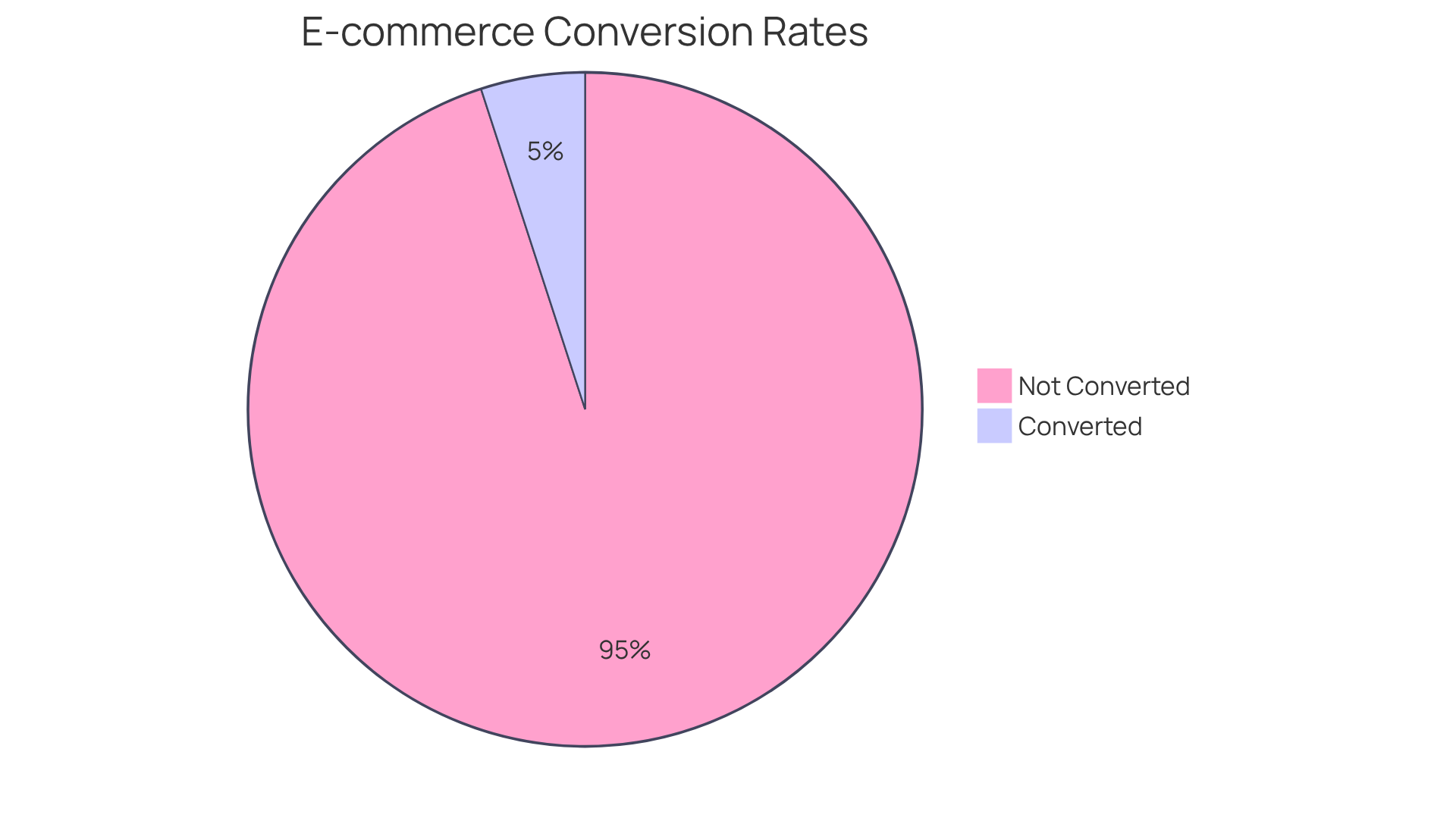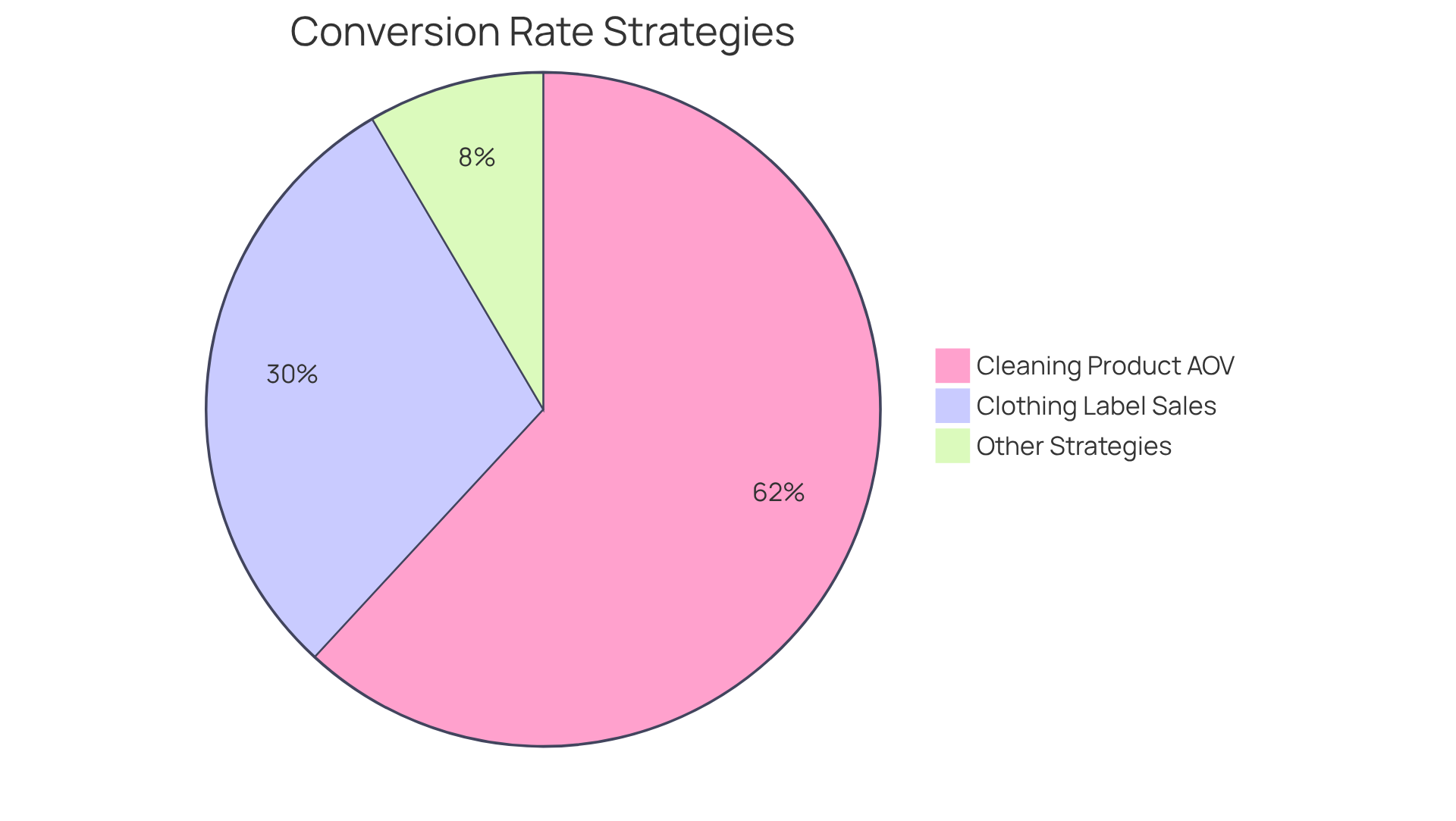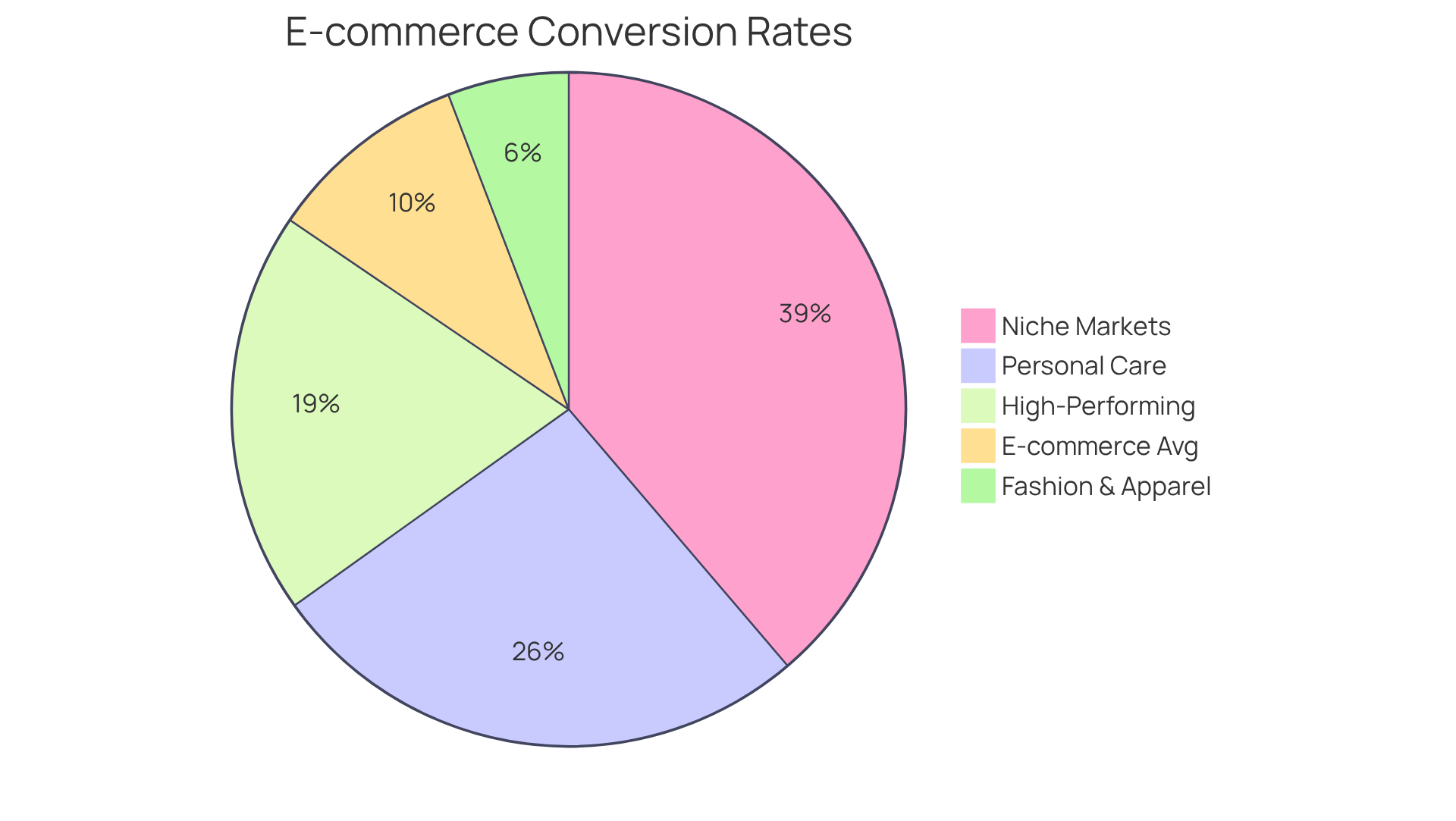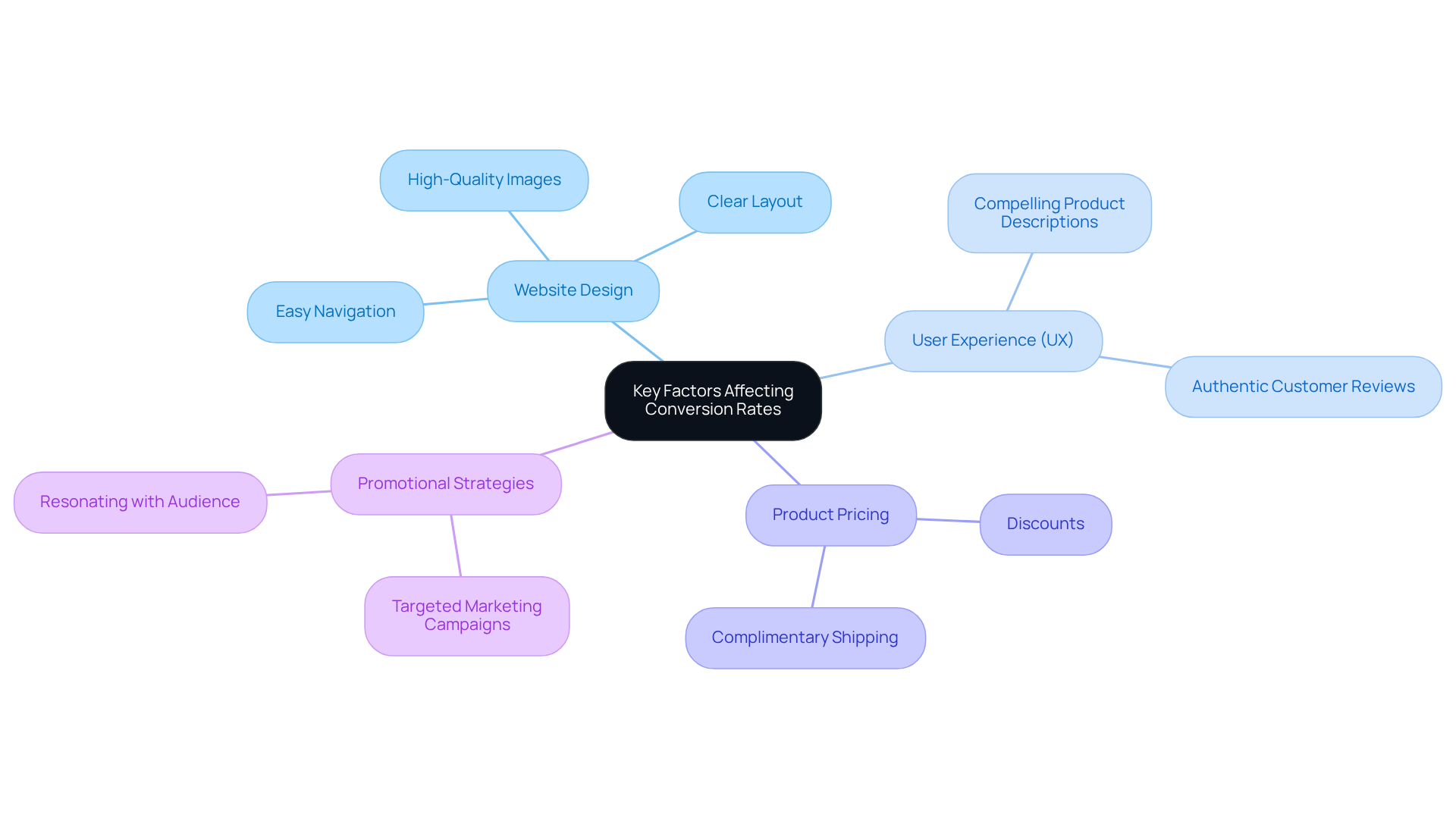
Overview
This article delves into the critical understanding of conversion rates in e-commerce, particularly highlighting their importance for direct-to-consumer (DTC) brands. A higher conversion rate is a clear indicator of successful visitor-to-customer transformation, which is essential for driving sales and enhancing profitability.
Case studies reveal substantial revenue growth achieved through strategic optimizations, underscoring the necessity of focusing on this metric. By recognizing the pivotal role of conversion rates, DTC brands can implement targeted strategies that not only attract visitors but also convert them into loyal customers, ultimately propelling their business forward.
Introduction
Understanding the intricacies of e-commerce conversion rates is paramount for direct-to-consumer (DTC) brands aiming for success in a fiercely competitive marketplace. This critical metric not only gauges the effectiveness of a website in converting visitors into customers but also serves as a pivotal indicator of overall business performance.
As companies confront escalating customer acquisition costs, the pressing challenge remains: how can they optimize their strategies to enhance conversion rates and drive sustainable growth? By delving into the key factors that influence these rates, brands can gain invaluable insights that empower them to refine their approaches and achieve greater profitability.
Define E-commerce Conversion Rate
The represents the percentage of website visitors who achieve a , such as making a purchase, signing up for a newsletter, or completing a contact form. To ascertain this critical ratio, divide the number of desired actions taken by the total number of visitors to the site, then multiply by 100 to express it as a percentage.
For example, if an online store attracts 1,000 visitors in a month and 50 of those visitors make a purchase, the conversion rate would stand at 5%. This metric is essential for evaluating the , as it assesses the effectiveness of an e-commerce site in transforming visitors into customers and offers insights that can drive strategic enhancements in marketing and user experience.
With a , (CRO) emerges as a formidable marketing tool for . By employing a holistic and data-informed approach to CRO, companies can significantly enhance profitability through comprehensive strategies that align paid advertisements with landing pages.
focuses on leveraging consumer psychology to implement , ensuring that companies not only attract visitors but also convert them efficiently. Understanding these dynamics can empower to refine their strategies and sustainably elevate their success.

Explain the Importance of Conversion Rates in E-commerce
The serves as a critical performance gauge for e-commerce companies, significantly impacting income generation. A high success ratio reflects a high conversion rate for ecommerce, indicating that a greater proportion of visitors are completing desired actions, resulting in increased sales without additional advertising costs.
For , improving the conversion rate for ecommerce is vital in a competitive environment marked by escalating . For instance, a $30M clothing label partnered with to revamp their homepage, emphasizing social validation and feedback, which ultimately led to a 35% and a 10% rise in revenue per visitor.
Similarly, Grab Green, a $15M cleaning product brand, implemented strategies such as free shipping thresholds and product bundles, resulting in an impressive 73% growth in . These case studies illustrate how can drive significant revenue growth.
Furthermore, understanding the conversion rate for ecommerce enables companies to pinpoint , customer experience, and product offerings. This comprehensive approach not only boosts sales but also cultivates enhanced —essential components for .

Outline Industry Benchmarks for E-commerce Conversion Rates
E-commerce success percentages vary significantly across different industries, with averages typically ranging from 1% to 3%. By 2025, the expected exchange percentage for is projected to remain between 2% and 4%. Notably, high-performing sites can achieve , particularly in sectors like personal care products, which boast an impressive average of 6.8%. Conversely, fashion and apparel websites often encounter challenges, with typical . Niche markets and subscription services frequently outperform, occasionally exceeding 10% in success rates.
Monitoring these benchmarks is essential for DTC companies, as it allows them to assess their performance relative to industry standards and pinpoint areas for strategic enhancement. Regular evaluation of the not only informs marketing investments but also aids companies in refining their customer engagement strategies, ultimately leading to increased profitability.
Partnering with a specialized , such as , can further elevate these efforts, focusing on sustainable growth strategies that reduce costs while enhancing margins, thereby equipping [DTC brands](http://parahgroup.com/blogs/10-key-insights-on-conversion-rate-ecommerce-average-for-dtc-brands) to navigate the competitive landscape effectively.

Identify Key Factors Affecting Conversion Rates
E-commerce success hinges on several :
- Website design
- Product pricing
- Promotional strategies
A well-structured website that facilitates easy navigation significantly enhances user experience, thereby driving success. Furthermore, clear and compelling product descriptions, coupled with and authentic customer reviews, play a pivotal role in influencing purchasing decisions. , such as offering discounts or complimentary shipping, can effectively boost sales. Additionally, that resonate with the intended audience are crucial for attracting qualified traffic, ultimately leading to an for ecommerce. Brands must continuously evaluate these factors and implement to optimize their performance.

Conclusion
Understanding the e-commerce conversion rate is paramount for direct-to-consumer (DTC) brands aiming for success in a fiercely competitive marketplace. This metric not only reflects a website's effectiveness in converting visitors into customers but also serves as a guiding light for enhancing marketing strategies and user experiences. By focusing on conversion rate optimization, brands can unlock substantial revenue potential while nurturing customer loyalty.
The article delineates critical insights into the significance of conversion rates, illustrating their profound impact on overall sales and profitability. It underscores the necessity of continuous evaluation of industry benchmarks, which can vary significantly across sectors. The examples of successful brands vividly demonstrate the tangible benefits derived from strategic adjustments in website design, user experience, and promotional tactics—all of which contribute to enhanced conversion rates.
Ultimately, the message is unequivocal: optimizing conversion rates transcends mere technical exercise; it is a vital strategy for sustainable growth. DTC brands are urged to adopt a data-driven approach, leveraging insights to refine their strategies and cultivate deeper connections with their customers. By prioritizing conversion rate optimization, brands can not only bolster their bottom line but also create a more engaging and fulfilling shopping experience for their audience.
Frequently Asked Questions
What is the e-commerce conversion rate?
The e-commerce conversion rate is the percentage of website visitors who complete a desired action, such as making a purchase, signing up for a newsletter, or filling out a contact form.
How is the e-commerce conversion rate calculated?
To calculate the e-commerce conversion rate, divide the number of desired actions taken by the total number of visitors to the site, then multiply by 100 to express it as a percentage.
Can you provide an example of how to calculate the conversion rate?
If an online store has 1,000 visitors in a month and 50 of those visitors make a purchase, the conversion rate would be 5% (50 divided by 1,000, multiplied by 100).
Why is the conversion rate important for e-commerce?
The conversion rate is essential for evaluating how effectively an e-commerce site transforms visitors into customers, providing insights that can drive improvements in marketing and user experience.
What is Conversion Rate Optimization (CRO)?
Conversion Rate Optimization (CRO) is a marketing strategy aimed at increasing the percentage of visitors who complete desired actions on a website, leading to a higher return on investment (ROI).
How can companies enhance their conversion rates?
Companies can enhance their conversion rates by employing a holistic and data-informed approach to CRO, aligning paid advertisements with landing pages and leveraging consumer psychology to implement strategies that boost profitability.
What methodology does Parah Group use to improve conversion rates?
Parah Group uses a five-step methodology that focuses on leveraging consumer psychology to implement profit-boosting techniques, ensuring that companies not only attract visitors but also convert them efficiently.
FAQs











